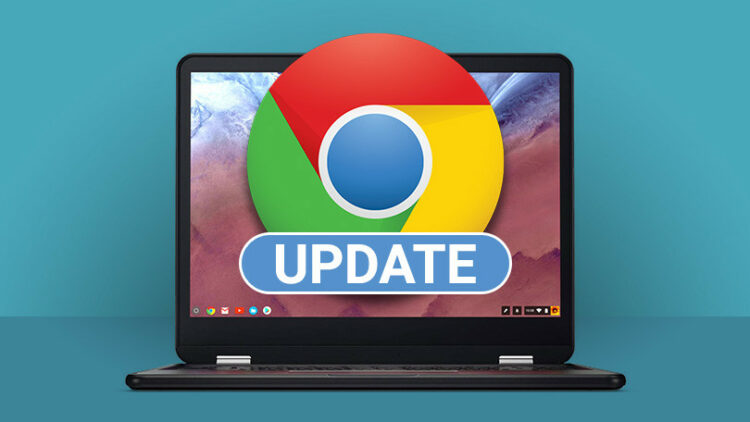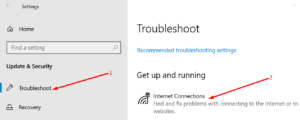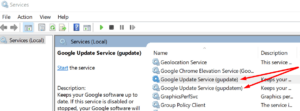Thus, you’ve learned that a new version of Chrome is now available. Naturally, you rush to install the latest updates to ensure that your browser is always up to date. However, you discover that certain error codes are preventing the process from continuing and that you are unable to install the latest Google Chrome version on your computer. In this guide, we’ll look at three common Google Chrome update errors, namely errors 3, 11, and 12.
What Do These Google Chrome Update Errors Mean?
1- Errors 3 and 11 indicate that Chrome was unable to locate or connect to the update server.
2- When the download process fails during the check for updates, Error 12 is displayed.
Solution:- How To Troubleshoot Chrome Update Errors 3, 11 And 12
1. Reboot Your Computer And Network Devices
Let’s start with some fundamental troubleshooting techniques. But, first, what do you do if something does not work properly? Yes, that is correct; you simply restart the offending program or device.
The same is true if Chrome refuses to update. Restart your computer and disconnect your modem/router.
Allow your computer to restart before reconnecting your modem/router to the wall socket and powering up your network devices.
If these errors occurred as a result of Chrome failing to connect to the update server, rebooting your Internet connection should fix the issue.
In terms of connectivity, if possible, use a cable connection. While updating Chrome or other programs, disconnect all other devices and users from the connection.
2. Run Windows 10’s Built-in Troubleshooters
If your network settings are incorrect, you can run one of three network troubleshooters to fix the issue.
1- Open the Settings app and navigate to the Update & Security section.
2- Click Troubleshoot and sequentially run the following troubleshooters:
- Internet Connections
- Incoming Connections
- Network Adapter
3- Try to install Chrome again.
3. Check Your Antivirus And Firewall Settings
Ascertain that no rules or settings exist on your computer that prevents users from downloading anything. These settings will also prevent update downloads.
Additionally, you can whitelist Chrome in your firewall and antivirus settings. Alternatively, while downloading and installing the latest Chrome updates, you can temporarily disable your antivirus and firewall.
After installing the latest Chrome version, re-enable your antivirus and firewall protection.
4. Disable Proxy And Flush DNS
Disable proxy on your computer in easy steps
1- Go to Start and type inetcpl.cpl → Press Enter
2- Click on the Connections tab
3- Navigate to the LAN settings
4- Check the option Automatically detect settings
5- Uncheck the option Use a Proxy Server for your LAN
6- Reboot your computer to apply the changes
Flush The DNS
If the Chrome update server retains a record of your previous IP address, the browser may be unable to update.
To flush the DNS, run the following command in Command Prompt as an administrator: ipconfig /flushdns.
5. Disable Your Extensions
To eliminate the possibility that your active browser extensions are causing this issue, disable all of your browser extensions.
Close the browser and restart it before attempting to install the latest updates. Next, click the Chrome menu icon, select Help, then About Google Chrome. Finally, click the Update button once more.
6. Enable Google Update Services
1- Open the Services app by going to Start and typing services.
2- Locate the Google Update Service (gupdate)
3- Right-click it and select Startup.
4- Select Automatic → hit Apply and OK
5- At this point, locate the other Google Update Service (gupdatem)
6- Set the Startup type to Automatic as well
7- Save the changes, close the browser, and retry the update installation.
If that doesn’t resolve the issue, restart your computer and attempt again.
7. Enable Chrome Update Using The Windows Registry
1- In the search bar, type regedit and press Enter to open the Registry Editor
2- Go to HKEY_LOCAL_MACHINE\SOFTWARE\Policies\Google
3- Locate the Default or Updatedefault key.
4- Right-click on it and select Modify
5- Change the Value data to 1 and save the modifications.
6- Go to HKEY_LOCAL_MACHINE\SOFTWARE\Wow6432Node\Google\Update
7- Locate and double-click the Default key.
8- Edit the Value data to 1 to enable Chrome updates by default
9- Restart your computer and update for browser updates.
Well, If none of the above resolves the issue, you can uninstall and reinstall Google Chrome. When you do so, your computer will automatically download and install the latest version of Chrome.








